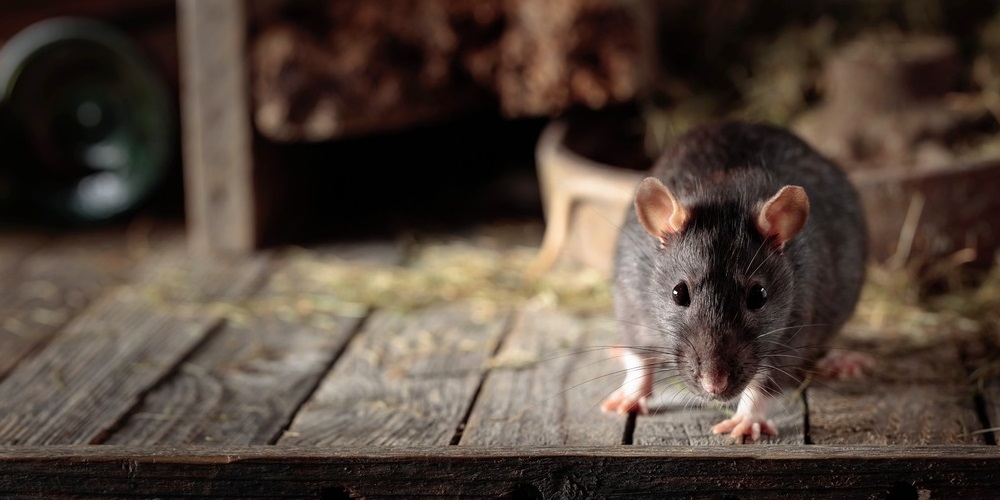
If you’re in need of rodent control in Coral Springs, you’re not alone — many South Florida residents face similar challenges. Due to the warm, humid weather, densely populated neighborhoods, and abundant food sources, mice and rats will always find places to thrive in our area.
Here at Gregory’s Pest Control, our effective rodent control and removal services can rid your home of rats and mice and prevent their return. Read on as we dive into everything you need to know about effective rodent control.
Signs of a Rodent Infestation
If you spot only a few rodents in or around your home, you’ll soon see many more. To avoid an all-out infestation, look for the following signs of rodents.
1. Rodent Droppings
The presence of rodent droppings is a sure sign of rats or mice in your home. They are dark and moist but become dry and gray over time. Even if you find droppings but haven’t spotted any rodents, one of the critters is almost certainly nearby.
2. A Foul Odor
An unexpected foul odor could indicate a rodent infestation. Rodent urine smells like stale ammonia. And although this smell might not be as noticeable with one or two mice in your home, you’ll notice it during an active infestation.
3. Signs of Gnawing and Biting
Rodents chew through cardboard boxes, drywall, and other cellulose-containing materials when looking for food. Look for a nearby rat or mouse if you see holes in your walls or food packaging with bite marks. The larger the bite mark, the bigger the rodent.
4. Rodent Nests
Rodents make nests from paper, fabric, or other organic matter found throughout your house. If you see these materials piled up, it’s likely a rodent nest.
5. Scratching or Scampering
Since mice and rats move around your house at nighttime, you may hear them scratching in your walls, scampering in your hallways or in the attic.
6. Unusual Pet Behavior
Pets will find a new smell or hear the rodent’s movement in the house. So, if they show unusual behavior, like excessive barking or interest in a particular area, look for signs of rats or mice.
Rodent Control Myths
Myth #1: My pet will handle it.
Reality:
Cartoons tell us cats and dogs protect homes from invading pests like mice and rats. The truth is, some pets don’t care about rodents in your walls or attic. However, most cats will go after and catch rodents, but they are known to carry diseases that could infect your pet.
Myth #2: No rodents in sight; no problem.
Reality:
Rodents skillfully avoid human detection by coming out at night when the household sleeps. But not seeing rodents doesn’t mean there aren’t any. If there’s evidence of rodents, such as droppings, you need a thorough pest control inspection to rule out possible infestation.
Myth #3: Rat poison always does the trick.
Reality:
Rat poison will solve your mouse and rat removal problem; however, it can take up to 10 weeks to take effect. During that time, rodents keep breeding and destroying property. If they die in your home, there’s a stench and a high risk of airborne illnesses.
Myth #4: Rodents are only inside in winter.
Reality:
Rodents seek indoor warmth during winter months. However, once settled, they are unlikely to leave on their own. And don’t assume that once the weather gets warmer, your rodent problem will disappear. It’s best to be safe and call in rat and mouse control.
The Basics of Mouse and Rat Prevention
Implementing a few effective prevention strategies can help keep the pesky critters from invading your home. Here’s a few basic mouse and rat prevention activities you can do on a daily basis to keep rodents at bay:
- Store food in sealed containers (check for signs of chewing).
- Eliminate moisture sites, such as leaky pipes and clogged drains, that are ideal breeding grounds for pests.
- Bag indoor garbage and cover outside bins.
- Look for holes in walls and baseboards.
- Remove the shredded paper and cardboard rodents may use for nest building.
- Wipe up spills immediately.
- Clean and vacuum regularly.
- Empty uneaten food from pet bowls.
Rodent Traps: The Pros and Cons
There is widespread availability of glue boards, snap traps, live traps, electric zapper traps, and even peppermint essential oil treatments. These traps can play a part in effective rat and mouse control. Still, these substances and gadgets are typically only short-term solutions.
A downside to traps is that people can be neglectful as to where and how they set them – often leading to inhumane forms of rodent removal. For instance, rats and mice often get caught alive in traps (held in place by the tail) and, if not released quickly, can suffer cruel and agonizing deaths.
Therefore, we recommend pest professionals who use humane pest control for rat and mice control problems.
Natural Rodent Control Without Poison
Avoiding rodenticides helps birds, other wildlife, pets, and families. So, why do we even consider these toxins a suitable type of mouse or rat removal when so many non-toxic options exist?
You should know that rat poison affects all birds and mammals despite having a broad range of alternatives, such as:
- Essential oils
- Physical barriers
- Repairing rodent entry points
- Pest-deterring gardens
- Non-toxic soap
You can also hire a pest control company that only applies products where needed, in the lowest effective quantity and with the least toxic materials possible.
Mouse or Rat Problems in Your Attic
Because rodents are drawn to dark, humid places, there’s a good chance they’ll eventually shelter in an attic or crawl space. These pests also love insulation materials like blown or loose-fill insulation since they are ideal for nesting.
Attic rodent-proofing occurs in four areas of the home:
- Attic – Look for gaps and holes around pipes, electrical wires, cables, vents, chimneys, and whatever else leads into the house.
- Crawl space/basement – Check for gaps and cracks in the foundation and around outside pipes. Rodents typically dig through the soil into the basement, finding their way into the attic through water pipes.
- The home’s footing – Seal gaps or cracks in the foundation to prevent easy rodent entry.
- Roof – Rodents can enter by chewing through wood, so we check the roof joints and any fans or vents that access the attic.
How to Look for Rodent Entry Points
Sealing off all entry points into your home is the key to keeping out unwanted guests such as rodents. Start by thoroughly inspecting the exterior of your home, pay special attention to areas where different materials meet such as gaps around windows, doors, vents, and utility pipes. Also, be sure to examine for cracks in the foundation, or holes into the attic or crawl space. Try using a flashlight or even a mirror to gain more visibility in these hard-to-reach areas.
Rodent-Proofing Your Home
The first step to rodent-proofing your home is by sealing of entry points discussed in the section above. Once that is complete, there are other actions suggested by the CDC such as removing food sources, water, and items that shelter rodents. This includes using an integrated pest management (IPM) approach which involves environmental sanitation, proper food storage, rodent-proofing, and trapping.
Cleaning Up After a Rodent Infestation
A rodent infestation is not pretty – or safe or sanitary. Removing mice droppings, nesting materials, and urine can make you sick. So the task should be done by pest control professionals using equipment, materials, and safety gear designed to remove and clean up mouse debris.
Moreover, since rodent droppings can transmit bacteria and diseases, the rodent experts at Gregory’s Pest Control are trained in the safest, most effective home protection methods possible.
When to Call in the Professionals
When it comes to rodents and other pests, there are small measures home and business owners can take to prevent infestations, such as cleaning their homes regularly and keeping their yards free of debris. Using sealed containers for food and water is also a must.
But if your homegrown mouse and rat control in Coral Springs is ineffective, then you should call in the professions before the problem worsens.
We always say that “When rodents move in, getting rid of them can’t wait.” Mice and rat removal is our top priority in solving your rodent problem. The second is ensuring that rodents can’t get back in. Our rodent exclusion service includes locating and sealing all entry points into your home or business.
We also place tamper-proof bait stations throughout your home for total pest protection. And we return to monitor and maintain these stations as part of our annual rodent service protection plan. So, if you need rodent control in Coral Springs, call us at (954) 787-4823.

Paul Gregory
Owner/President of Gregory’s Pest Control
I’m a 2nd generation pest control owner who started working for my father in 1999. I was raised in South Florida and feel blessed to call it home for my entire adult life. As a long-term Florida resident, I recognize the challenges of controlling the many different pests that thrive in our subtropical climate. In particular, I understand how difficult it can be to prevent pests from invading our homes and businesses. By helping families solve their pest problems so they can live safer, more comfortable lives, I feel I am also meeting my family’s commitment to help our community. When I’m not out fighting pests, you can find me on the golf course or out on a soccer field where I have been fortunate enough to coach soccer to kids of all ages for the past 20 years.




